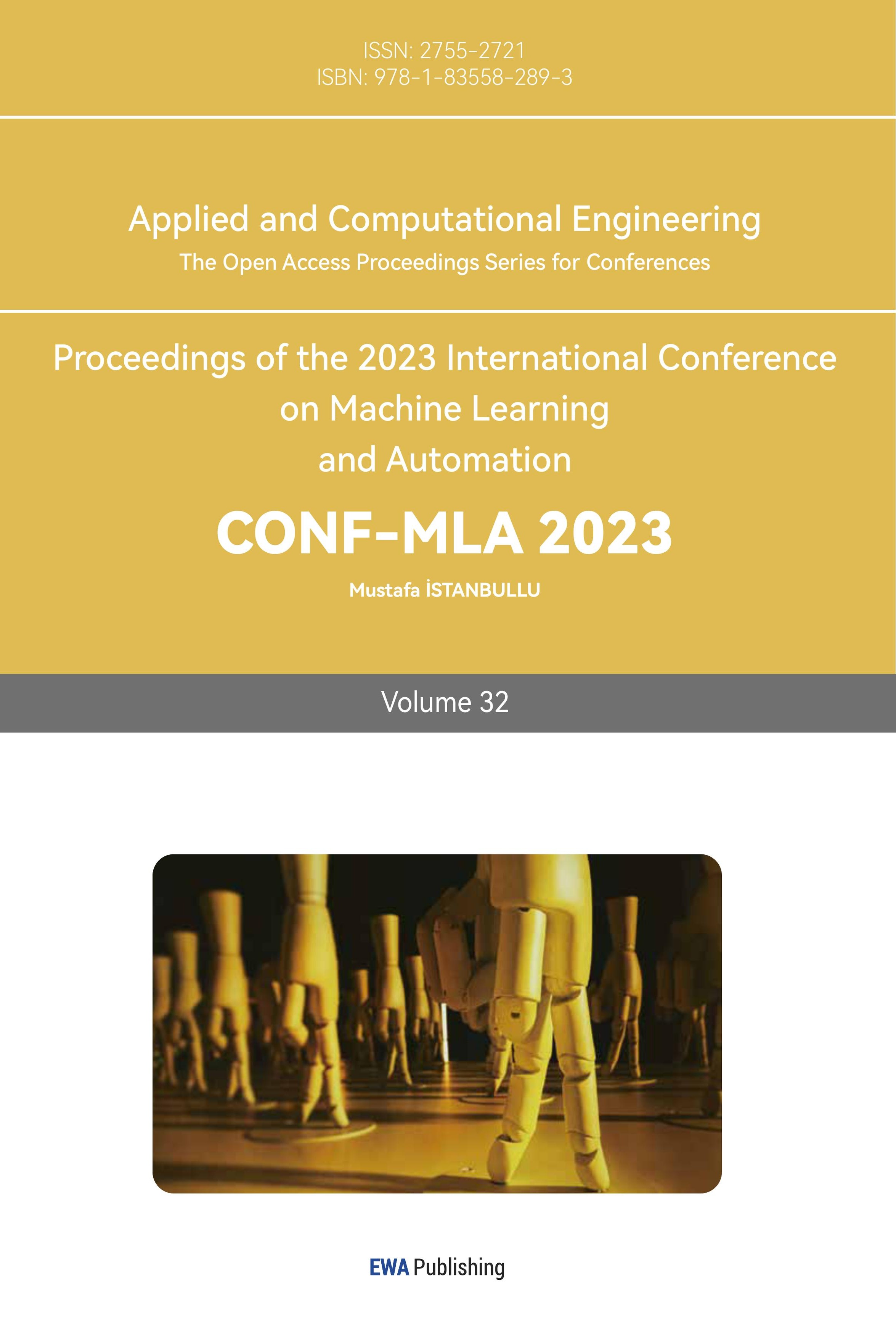References
[1]. Shannon, C. E. (1948). A mathematical theory of communication. The Bell System Technical Journal, 27(3), 379-423.
[2]. Hamming, R. W. (1950). Error detecting and error correcting codes. The Bell System Technical Journal, 29(2), 147-160.
[3]. Chien, R. (1964). Cyclic decoding procedures for Bose-Chaudhuri-Hocquenghem codes. IEEE Transactions on Information Theory, 10(4), 357-363.
[4]. Berrou, C., Glavieux, A., & Thitimajshima, P. (1993). Near Shannon limit error-correcting coding and decoding: Turbo-codes. 1. In Proceedings of ICC'93-IEEE International Conference on Communications (Vol. 2, pp. 1064-1070). IEEE.
[5]. Gallager, R. (1962). Low-density parity-check codes. IRE Transactions on Information Theory, 8(1), 21-28.
[6]. Arikan, E. (2009). Channel polarization: A method for constructing capacity-achieving codes for symmetric binary-input memoryless channels. IEEE Transactions on Information Theory, 55(7), 3051-3073.
[7]. Xiong, X. Han, Zhong, C. -N. Yang, & Xiong, N. N. (2023). RSIS: A Secure and Reliable Secret Image Sharing System Based on Extended Hamming Codes in Industrial Internet of Things. IEEE Internet of Things Journal, 10(3), 1933-1945.
[8]. Adamu, M. J., Qiang, L., Zakariyya, R. S., et al. (2021). An efficient turbo decoding and frequency domain turbo equalization for lte based narrowband internet of things (nb-iot) systems. Sensors, 21(16), 5351.
[9]. Wang, Z., Du, Y., Wei, K., et al. (2022). Vision, application scenarios, and key technology trends for 6G mobile communications. Science China Information Sciences, 65(5), 151301.
[10]. Saura, J. R., Palacios-Marqués, D., & Ribeiro-Soriano, D. (2021). Using data mining techniques to explore security issues in smart living environments in Twitter. Computer Communications, 179, 285-295.
[11]. Wolpaw, J. R., Birbaumer, N., Heetderks, W. J., et al. (2000). Brain-computer interface technology: a review of the first international meeting. IEEE Transactions on Rehabilitation Engineering, 8(2), 164-173.
[12]. Radianti, J., Majchrzak, T. A., Fromm, J., et al. (2020). A systematic review of immersive virtual reality applications for higher education: Design elements, lessons learned, and research agenda. Computers & Education, 147, 103778.
Cite this article
Luo,J. (2024). An enhanced single-disk fast recovery algorithm based on EVENODD encoding: Research and improvements. Applied and Computational Engineering,32,50-57.
Data availability
The datasets used and/or analyzed during the current study will be available from the authors upon reasonable request.
Disclaimer/Publisher's Note
The statements, opinions and data contained in all publications are solely those of the individual author(s) and contributor(s) and not of EWA Publishing and/or the editor(s). EWA Publishing and/or the editor(s) disclaim responsibility for any injury to people or property resulting from any ideas, methods, instructions or products referred to in the content.
About volume
Volume title: Proceedings of the 2023 International Conference on Machine Learning and Automation
© 2024 by the author(s). Licensee EWA Publishing, Oxford, UK. This article is an open access article distributed under the terms and
conditions of the Creative Commons Attribution (CC BY) license. Authors who
publish this series agree to the following terms:
1. Authors retain copyright and grant the series right of first publication with the work simultaneously licensed under a Creative Commons
Attribution License that allows others to share the work with an acknowledgment of the work's authorship and initial publication in this
series.
2. Authors are able to enter into separate, additional contractual arrangements for the non-exclusive distribution of the series's published
version of the work (e.g., post it to an institutional repository or publish it in a book), with an acknowledgment of its initial
publication in this series.
3. Authors are permitted and encouraged to post their work online (e.g., in institutional repositories or on their website) prior to and
during the submission process, as it can lead to productive exchanges, as well as earlier and greater citation of published work (See
Open access policy for details).
References
[1]. Shannon, C. E. (1948). A mathematical theory of communication. The Bell System Technical Journal, 27(3), 379-423.
[2]. Hamming, R. W. (1950). Error detecting and error correcting codes. The Bell System Technical Journal, 29(2), 147-160.
[3]. Chien, R. (1964). Cyclic decoding procedures for Bose-Chaudhuri-Hocquenghem codes. IEEE Transactions on Information Theory, 10(4), 357-363.
[4]. Berrou, C., Glavieux, A., & Thitimajshima, P. (1993). Near Shannon limit error-correcting coding and decoding: Turbo-codes. 1. In Proceedings of ICC'93-IEEE International Conference on Communications (Vol. 2, pp. 1064-1070). IEEE.
[5]. Gallager, R. (1962). Low-density parity-check codes. IRE Transactions on Information Theory, 8(1), 21-28.
[6]. Arikan, E. (2009). Channel polarization: A method for constructing capacity-achieving codes for symmetric binary-input memoryless channels. IEEE Transactions on Information Theory, 55(7), 3051-3073.
[7]. Xiong, X. Han, Zhong, C. -N. Yang, & Xiong, N. N. (2023). RSIS: A Secure and Reliable Secret Image Sharing System Based on Extended Hamming Codes in Industrial Internet of Things. IEEE Internet of Things Journal, 10(3), 1933-1945.
[8]. Adamu, M. J., Qiang, L., Zakariyya, R. S., et al. (2021). An efficient turbo decoding and frequency domain turbo equalization for lte based narrowband internet of things (nb-iot) systems. Sensors, 21(16), 5351.
[9]. Wang, Z., Du, Y., Wei, K., et al. (2022). Vision, application scenarios, and key technology trends for 6G mobile communications. Science China Information Sciences, 65(5), 151301.
[10]. Saura, J. R., Palacios-Marqués, D., & Ribeiro-Soriano, D. (2021). Using data mining techniques to explore security issues in smart living environments in Twitter. Computer Communications, 179, 285-295.
[11]. Wolpaw, J. R., Birbaumer, N., Heetderks, W. J., et al. (2000). Brain-computer interface technology: a review of the first international meeting. IEEE Transactions on Rehabilitation Engineering, 8(2), 164-173.
[12]. Radianti, J., Majchrzak, T. A., Fromm, J., et al. (2020). A systematic review of immersive virtual reality applications for higher education: Design elements, lessons learned, and research agenda. Computers & Education, 147, 103778.









